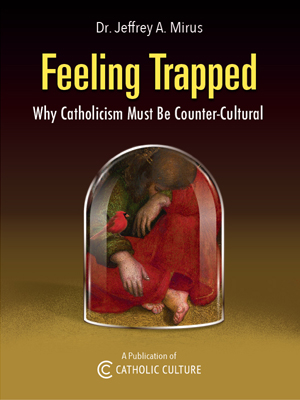I'm not upset about the #ashtag meme; I'm just baffled
By Phil Lawler ( bio - articles - email ) | Feb 18, 2015
Why is Ash Wednesday—not Easter Sunday, not Christmas, not Good Friday or Pentecost—the day when American Catholics spend the most time talking about being Catholic?
Free eBook:

|
| Free eBook: Feeling Trapped |
Why is it that, after hearing a reading about doing penance in secret, people feel a compulsion to show the world how they look with ashes on their foreheads?
Why do people go to church on Ash Wednesday, who don't ordinarily show up on Sunday?
In short, what's so attractive about ashes?
Don't misunderstand me; I'm not saying that the popularity of the #ashtag meme is a bad thing. I suspect, on the contrary, that it's quite a good thing—that if we understood why it's so popular, we might gain some valuable understanding about what people want from the Church. Having said that, though, I confess that I just don't understand.
All comments are moderated. To lighten our editing burden, only current donors are allowed to Sound Off. If you are a current donor, log in to see the comment form; otherwise please support our work, and Sound Off!
-
Posted by: AgnesDay -
Feb. 20, 2015 2:10 PM ET USA
So, how's this? Start a #Paschaltag and have everyone post a shot of their candle from Easter Vigil. I remember an Ash Wednesday when I was studying Revelation using the Scott Hahn tapes, and I looked at the congregation, all wearing the sign of the tau on their foreheads, including the children. It was awe inspiring.
-
Posted by: msorensen71798 -
Feb. 19, 2015 1:37 PM ET USA
One benefit: The #ashtag meme can help reduce those embarrassing "You've got dirt on your head" comments.
-
Posted by: Paul - Ave Law '07 -
Feb. 18, 2015 5:33 PM ET USA
(continued, again) 5) As for the apparent conflict with Joel 2 and Matthew 6 ... that apparent conflict exists in the liturgical act of giving / getting the ashes in the first place. It is a paradox that a thousand lousy homilies probably noted today without resolution or a particularly effective call to action. The addition of social media to the equation adds little to the underlying paradox.
-
Posted by: Paul - Ave Law '07 -
Feb. 18, 2015 5:33 PM ET USA
(continued) 3) Stated differently: Ashes are "on my face" but not "in your face" - while ashes call attention to my (perhaps haphazard) walk of faith in Christ, they do so in a way that doesn't suggest that the ashes-wearer is reminding the non-Christian viewer that the non-Christian viewer may be going to hell. 4) No one is seeking to exclude ashes from the public square: I get to give a "testimony" (of limited bandwith) as to my Christianity and (because of the limited bandwith of the messag
-
Posted by: Paul - Ave Law '07 -
Feb. 18, 2015 5:31 PM ET USA
I would propose these several answers to your inquiry as to the attractiveness of ashes: 1) An "#ashtag" picture is personal, doable, and (pacé Phil) understandable: go to church, get ashes, take picture of your face, post, done. (What analogous thing - easily recognizable and likely understood by one's viewers - could a million different people do on Easter, Good Friday, etc.?) 2) Ashes evidence or suggest humility (or, at least a more-or-less effective #humblebrag)








